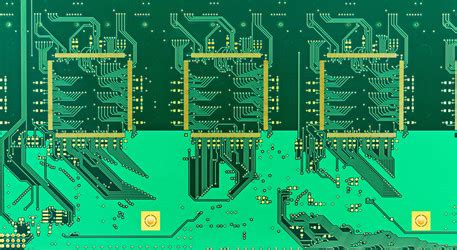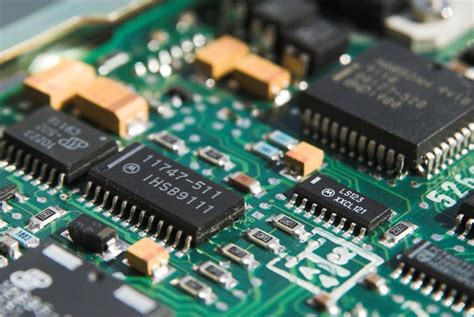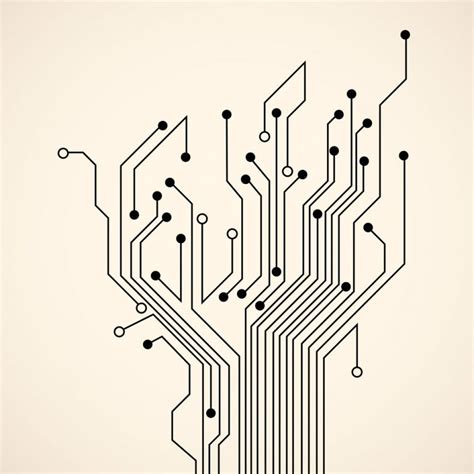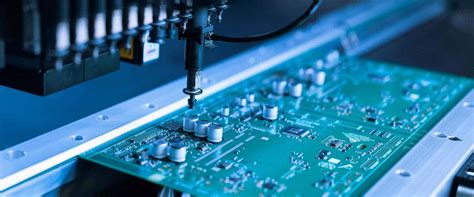Assembly and Rework of BGA Components
Most manufacturers agree that ball grid array (BGA) devices have undeniable advantages. But some issues in this technology remain to be discussed further rather than immediately implemented, because it is difficult to trim the solder ends. The interconnect integrity of BGA can only be tested by X-ray or electrical test circuit methods, but both methods are expensive and time-consuming.
Designers need to understand the performance characteristics of BGA, which is very similar to the early SMD.
PCB designers must know how to modify the design accordingly when the manufacturing process changes. For manufacturers, there are challenges in handling different types of BGA packages and changes in the final process. In order to improve the yield, assemblers must consider establishing a new set of standards for handling BGA devices. Finally, to obtain the most cost-effective assembly, perhaps the key lies in the BGA reworker.
The two most common BGA packages are plastic BGA (PBGA) and ceramic BGA package (CBGA).
PBGAs have fusible solder balls, typically 0.762mm in diameter, that collapse into 0.406mm high solder joints between the package and the PCB during reflow (typically 215°C). CBGAs use non-fusible solder balls (actually, their melting point is much higher than the reflow temperature) on the components and printed circuit boards, with a diameter of 0.889mm and a constant height.
The third type of BGA package is the tape ball grid array package (TBGA), which is increasingly being used in high-performance assemblies that require lighter, thinner devices. TBGAs can have more than 700 I/O leads on a polyimide tape. TBGAs can be processed using standard screen-printed solder paste and conventional infrared reflow methods.
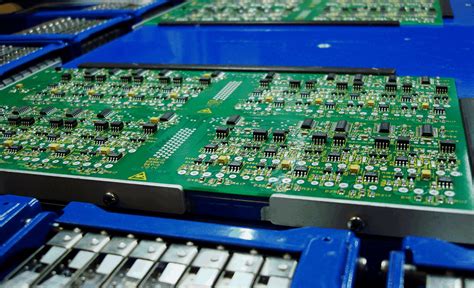
Assembly Issues
The biggest advantage of BGA assembly is that, if assembled correctly, it has a higher pass rate than conventional devices. This is because the lack of leads simplifies component handling and therefore reduces the likelihood of device damage.
The BGA reflow process is the same as the SMD reflow process, but BGA reflow requires precise temperature control and the establishment of an ideal temperature curve for each component. In addition, most BGA components are able to automatically align on the pads during reflow. Therefore, from a practical point of view, BGA can be assembled with equipment that assembles SMD.
However, since the solder joints of BGA are invisible, the solder paste application must be carefully observed.
The accuracy of solder paste application, especially for CBGA, will directly affect the assembly pass rate. Generally, SMD component assembly is allowed to have a low pass rate because its rework is fast and cheap, but BGA components do not have such advantages. In order to improve the first pass rate, many high-volume BGA assemblers have purchased inspection systems and complex rework equipment. Inspecting solder paste application and component placement before reflow is more cost-effective than inspecting after reflow, because inspection after reflow is difficult and the equipment required is expensive.
Careful selection of solder paste is required because the composition of solder paste is not always ideal for BGA assembly, especially for PBGA assembly. Suppliers must be assured that their solder paste will not void the joints. Likewise, if water-soluble solder paste is used, care should be taken in selecting the package type.
Because PBGAs are sensitive to moisture, pre-treatment measures should be taken before assembly.
It is recommended that all packages be fully assembled and reflowed within 24 hours. Leaving the device out of the antistatic protective bag for too long will damage the device. CBGAs are not sensitive to moisture, but care should still be taken.

Rework
The basic steps for reworking BGAs are the same as those for reworking traditional SMDs:
Establish a temperature profile for each component;
Remove the component;
Remove residual solder paste and clean the area;
Place a new BGA device. In some cases, the BGA device can be reused;
Reflow.
Of course, each of the three main types of BGAs requires slightly different adjustments to the process. For all BGAs, the establishment of a temperature profile is quite important. Do not try to skip this step. If the technician does not have the right tools and has not received special training, he will find it difficult to remove the residual solder paste. Too frequent use of poorly designed desoldering braids, coupled with poorly trained technicians, can lead to damage to the substrate and solder mask.
Establishing a temperature profile
BGAs require much higher temperature control requirements than traditional SMDs. The entire BGA package must be heated gradually to allow reflow of the solder joints.
If the temperature, temperature rise rate, and hold time are not strictly controlled (2°C/s to 3°C/s), reflow will not occur simultaneously and may damage the device. Establishing a stable temperature profile for BGA desoldering requires some skill. Designers do not always have information about each package, and trial and error methods may cause thermal damage to the substrate, surrounding devices, or floating pads.
Technicians with extensive BGA rework experience rely primarily on destructive methods to determine the appropriate temperature profile.
Holes are drilled in the PCB to expose the solder joints, and thermocouples are then connected to the solder joints. In this way, a temperature profile can be established for each solder joint being monitored. The technical data shows that the establishment of the PCB temperature curve is based on a PCB full of components, which uses new thermocouples and a calibrated recording element, and thermocouples are installed in the high and low temperature areas of the PCB. Once the temperature curve is established for the substrate and BGA, it can be programmed for repeated use.
BGAs can be removed relatively easily using some hot air rework systems.
Usually, hot air at a certain temperature (determined by the temperature curve) is ejected from the nozzle to reflow the solder paste without damaging the substrate or surrounding components. The type of nozzle varies depending on the equipment or the technician’s preference. Some nozzles flow hot air over the top and bottom of the BGA device, some nozzles move the hot air horizontally, and some nozzles only spray hot air above the BGA. Some people also like to use a nozzle with a hood, which can focus the hot air directly on the device, thereby protecting the surrounding devices. When removing BGAs, it is important to maintain temperature. The key is to preheat the bottom of the PCB to prevent warping. Removing BGAs is a multi-point reflow, so it requires skill and patience. In addition, it usually takes 8 to 10 minutes to rework a BGA device, which is slower than reworking other surface mount components.

Cleaning the Mounting Location
Before mounting the BGA, the rework area should be cleaned. This step can only be performed manually, so the technician’s skills are very important. If the cleaning is not sufficient, the new BGA will not reflow properly, and the substrate and solder mask may be damaged and cannot be repaired.
When reworking BGAs in large quantities, common tools include desoldering irons and hot air desoldering devices.
Hot air desoldering devices heat the surface of the pad first and then use a vacuum device to suck away the molten solder paste. Desoldering irons are easy to use, but require skilled personnel to operate. If used improperly, desoldering irons can easily damage printed circuit boards and pads.
When removing residual solder paste, many assemblers like to use desoldering braids. If the right braid is used and the method is correct, the removal process will be fast, safe, efficient and inexpensive.
Although using desoldering braids requires a certain amount of skill, it is not difficult.
Touch the soldering iron and the selected braid to the solder paste to be removed so that the wick is between the tip and the substrate. Direct contact of the tip to the substrate may cause damage. Solder Paste-Wicked BGA Desoldering Braid is specifically designed to remove residual solder paste from BGA pads and components without damaging solder mask or exposed traces. It allows for optimal heat transfer through the braid to the solder joint, minimizing the chance of pad displacement or PCB damage.
Because the solder wick is so mobile in use, it is not necessary to drag the wick to avoid heat damage. Instead, place the wick between the substrate and the tip, heat for 2 to 3 seconds, and then lift the braid and iron upward. Lifting, rather than dragging, the braid minimizes the risk of pad damage. The braid removes all residual solder paste, eliminating the possibility of bridging and shorts. After removing the residual solder paste, clean the area with an appropriate solvent. Residual flux can be removed with a brush. The PCB must be clean for proper reflow of new components.
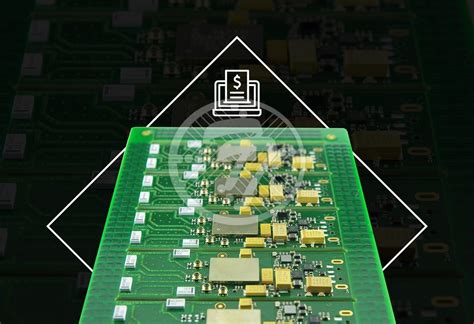
Mounting Devices
A skilled technician can “see” some device placement, but this approach is not recommended. If higher process yields are required, a split-optics vision system must be used. Devices are placed, calibrated, and reflowed with hot air using a vacuum pick-up tube. Here, a pre-programmed and precisely determined temperature profile is critical. BGAs are most likely to fail when components are removed, so their integrity may be overlooked.
When re-placing components, a completely different approach should be taken.
Preheating (100°C to 125°C), temperature ramp rate, and temperature hold time are critical to avoid damaging the new BGA. CBGAs can absorb more heat than PBGAs, but the ramp rate is slower than the standard 2°C/s.
BGAs have many advantages that are suitable for modern high-speed assembly. BGA assembly may not require new processes, but existing processes must be suitable for BGA assembly with hidden solder joints. To make BGAs more cost-effective, high yields must be achieved and components can be effectively reworked. Proper training of rework technicians, use of appropriate rework equipment, and understanding of the key processes of BGA rework will all help achieve stable and effective rework.


